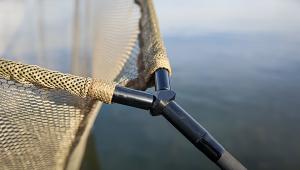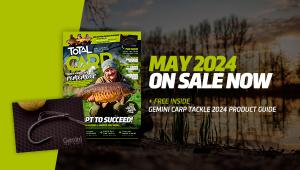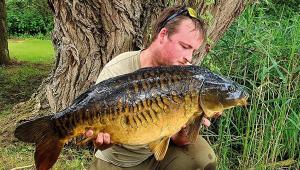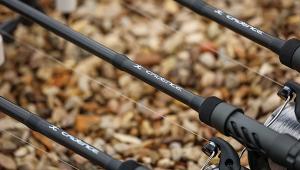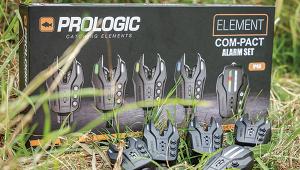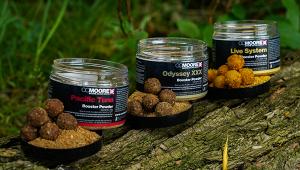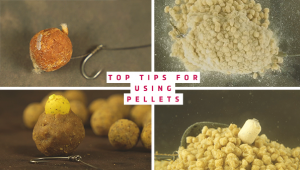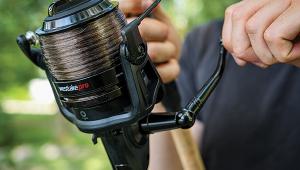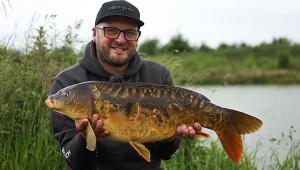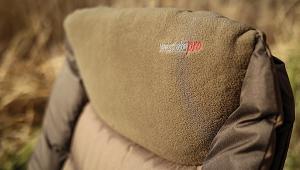7 Tips For Your Best Winter Yet
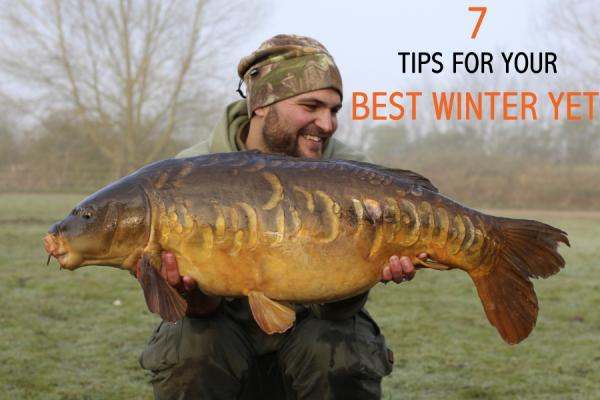
7 TIPS FOR YOUR BEST WINTER YET
Consistent carp catcher CRAIG MORTIMER reveals his seven top tips that help him maintain his form through the toughest season of them all.
Zigging
For years zigging was considered a summer method. The sun’s rays brought the carp to the top and it was a great way for anglers who weren’t so confident fishing on the top, to present a bait in the upper layers. Well forget all that and pick up your zig gear because now is the real time to capitalise. Depending on water depths, carp will sit just under the thermocline in the more constant and generally warmer temperature. Zigs are ideal to position at such depths, but equally, as the sun begins to shine for any length of time the surface layers will begin to hold heat. So on those days of clear skies, high pressure and bright sunshine it is always worth playing around with a zig or two.
Step-By-Step: Zig Rig
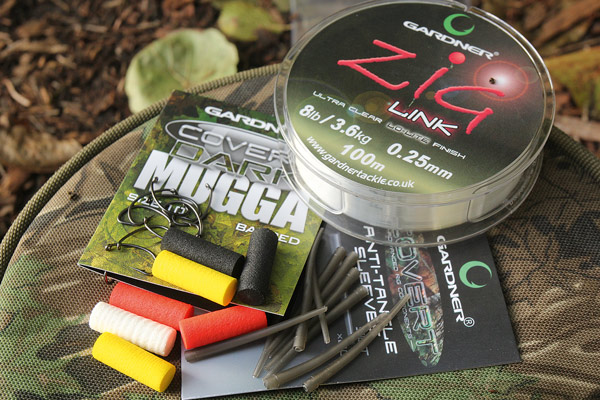
Easy to tie Zig Rigs only require a few components, which will generally last you a long time
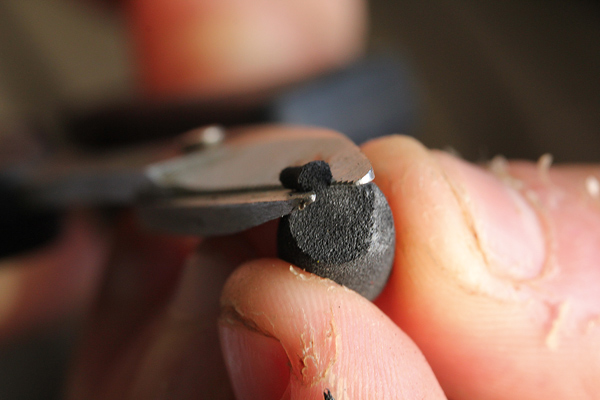
Start by cutting a length of foam in half and trim down so it is rounded and non-uniform in shape
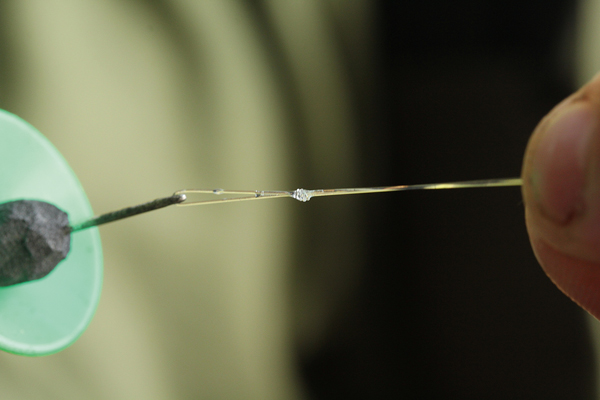
Tie an overhand knot in the Zig Link hook link material. This will make your knotless knot section
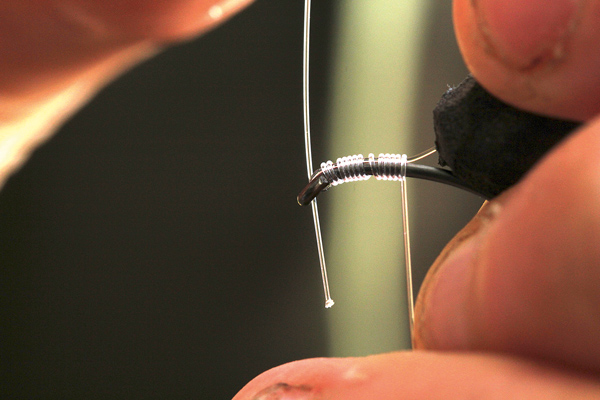
Cut your required length of material off and begin to secure with a knotless knot. Craig uses around 10 to 12 turns.
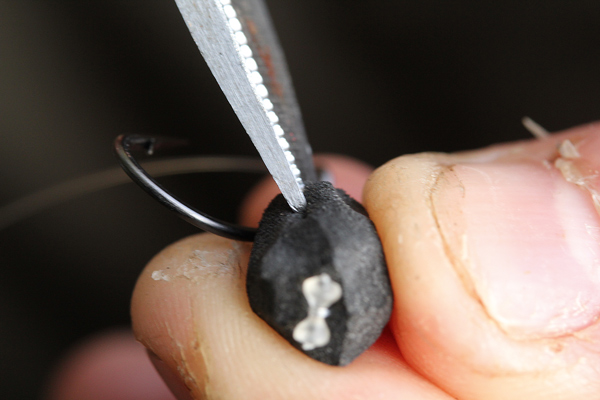
After the hook and foam are secured, Craig cuts into the foam forming a small slot in the hook bait.
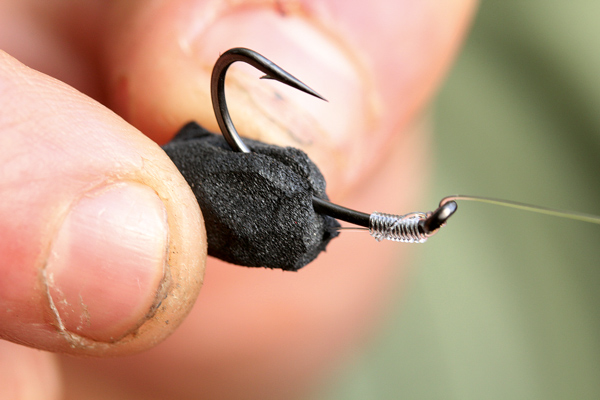
Tease the hook inside the slot. This ensures the hook bait is small and tight to the hook.
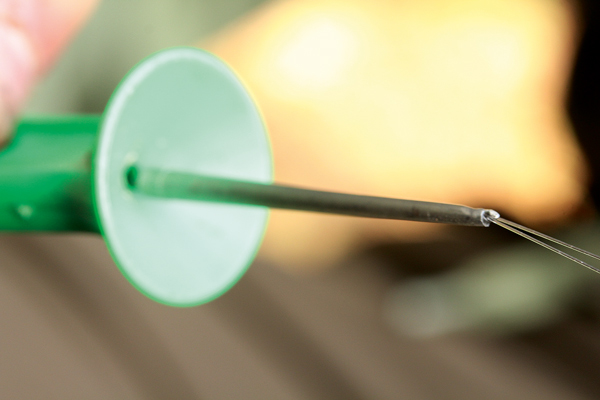
Take a large anti-tangle sleeve and, using a fine baiting needle, thread it onto the hook link material.
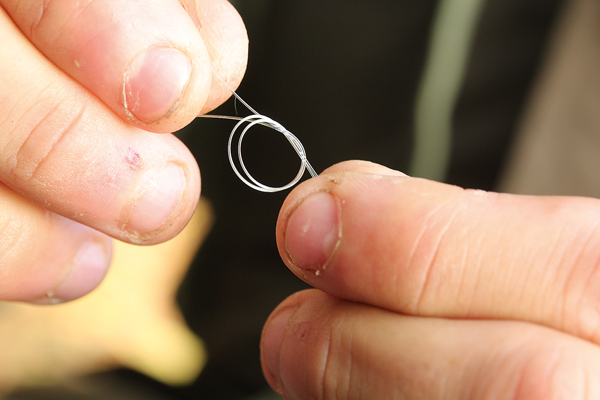
Form another overhand knot in the end of the hook link. This will be used to attached to your lead setup.
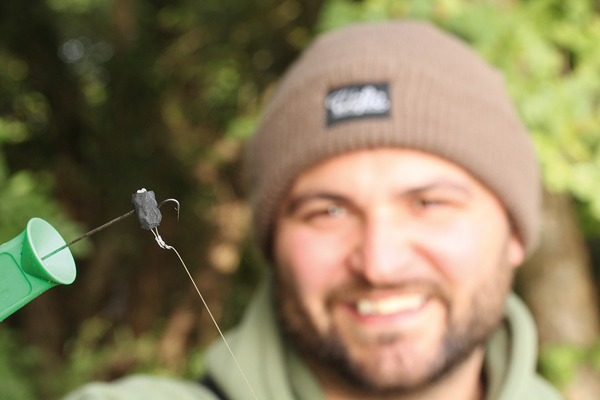
The end result is a tidy and neat zig rig that can be fished at any depth, perfect for those shoaling Winter carp.
TO BUY THESE GARDNER COMPONENTS
Maggots
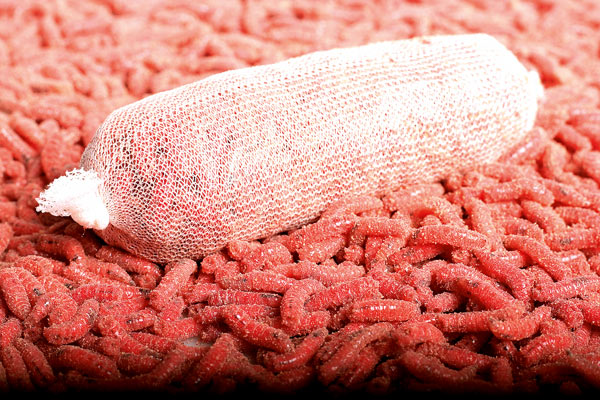
These have to be one of the most popular winter baits of all time. Of course, they work all year round but they can really come into their own at this time of year, and when all else fails a patch of red grubs can often instigate a bite. There are various colours available but I have always found white and red to be the most effective. Now I’m not telling you to go silly here and buy five gallons at a time. This would be very expensive and I have found that when feeding such large quantities, trying to convert a take can be near impossible because the carp home in on the small morsels and become preoccupied. A few pints will suffice.
Make up fairly large PVA mesh bags and fish one bag at a time. It is always worth clipping your rod up to ensure that every time you recast you are continually baiting the same spot rather than spraying maggots throughout your swim and not getting the carp concentrated around your hook bait. Avoid big hook baits; an artificial grub and a few maggots threaded directly on the hair are your best bet. Even a sliver of foam will produce the goods.
Search For The Deeper Water
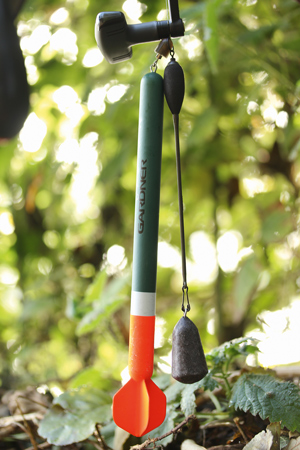
This will inevitably seem like a an obvious tip, but after the recent craze of only leading around with a bare lead, it is time to reach for your dusty marker float and invest some time surveying the water properly. Unless you are a very experienced, seasoned carp angler it is hard to determine the depth you are fishing just by using a lead. As the water begins to cool, fish will head for the most comfortable parameters possible and this can generally be situated around the thermocline. The deeper the water, the more constant the temperatures are and because carp are poikilothermic they rely solely on their surrounding temperature to fuel their vital life processes. The difference in depth you may be looking for could only be a foot or two, so don’t leave it to chance. Remember to keep your rod tip in the same position when you pay off line to ensure the most accurate of measurements. I always use a braided main line to ensure a direct line from me to the lead. Plus, a large lead of 3oz to 4oz is perfect for feeling the substrate and giving you a good anchor point to work from.
Tighten Up
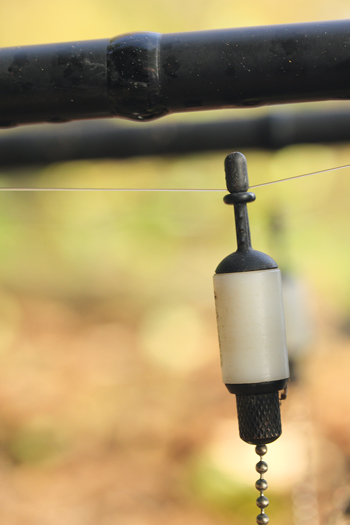
I used to love fishing slack lines and where situations allow, like when targeting carp under my rod tips, I will happily do so. Tight lines offer far more indication and having a taut line running throughout the swim will clearly identify any carp that may be passing through. When I say tight, I like them to sit almost cocked with my rod tips poised under tension. Bites can often be a lot more finicky throughout the colder seasons because the carp aren’t feeding as heavily and not moving much, so the slightest bobbin twitches and even a ¼in drop back can signal that a carp is on.
Start With Singles
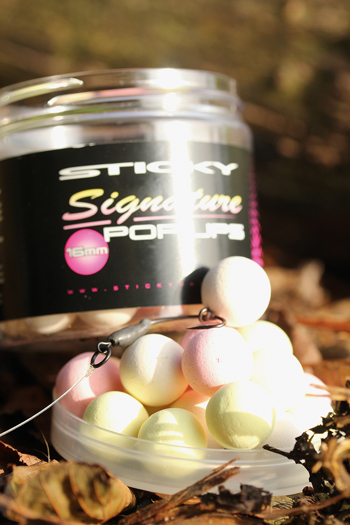
Bright, high-attract baits are a great method to employ when bites are hard to come by. If you are lucky enough to see a showing fish, get one of these on it as quickly as you can. They also allow you to cover a lot of water. By fanning out three rods with a visual bait on each, you can try to determine where the carp may be stacked up. In this situation, I would often put a different coloured bait on each rod. I have done extremely well using the Signature range of pop-ups from Sticky. These pastel colours aren’t as blatant as some but with a strong aroma, they seem to nick a bite when all else fails. Pale pinks and white have served me really well and when tied to a Ronnie rig or stiff hinged presentation these can be cast just about anywhere. Be sure to keep casting regularly throughout the day. Sometimes when the venue is fishing hard you might literally have to put your bait right in front of a waiting carp.
GET YOUR STICKY POP UP'S HERE
Head To The Horizon
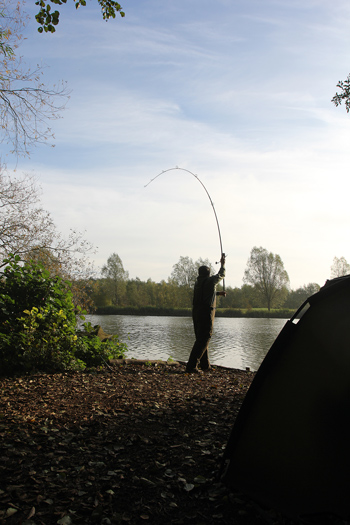
Gone are the days of the carp regularly patrolling the margin. It is often the case throughout autumn and winter that the carp will push out into the middle of the lake, and this could be where they stay for the foreseeable future, at least until the conditions change. With the right monofilament main line you should be able to get among them in most cases. A lot of venues will see the regular anglers maxing out anywhere between 60 to 100 yards. If you tool up correctly, even an extra 10 yards on these guys could put you directly in pole position. My preference is Gardner Tackle GT-HD in 15lb. It is strong enough to cope with the rigours of modern-day carp angling, yet I can happily put it 120 yards with a 31/2oz lead.
Of course, rods play a massive role in casting. If you have soft, whippy rods you will struggle regardless of main line choice. However, you will be far better suited to a smaller 2oz or 21/2oz lead. Matching your lead to your rod is vital here.
Wrap Up
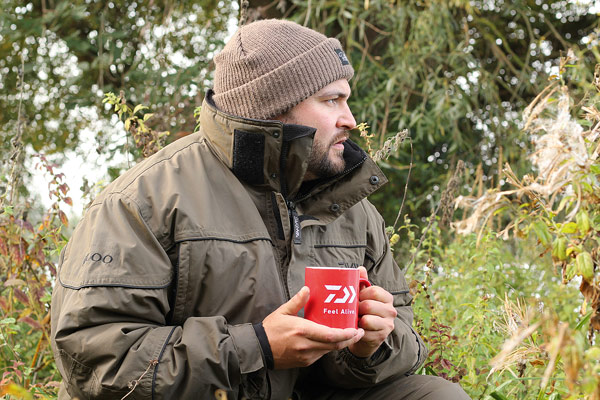
Now this is an obvious one, yet I still see anglers wearing trainers, a pair of combats and a hoodie then moaning when they are cold. If you cannot look after yourself when out on the bank, your motivation will be taking a hit, as will the efficiency of your angling. Good cooked food, hot drinks and of course protective clothing are vital to keep you feeling energised and fishing at your best. Generally, layers of clothes work best to trap your body heat and keep the cold at bay. A large protective suit is also a wise choice should it begin to rain or those bitter easterly winds pick up. You can also brush against the wet undergrowth and kneel down in the mud without having to worry about getting your clothes wet and suffering later. If you can happily spend time on the bank without the weather affecting you, the longer you can wait it out until the action begins. Winter really is a case of persevering through the blank sessions and trying to mix things up until you get a bite; then you have something to work on. Just having the correct clothing will put you in a far better position than most, and as the banks get quieter you can really use this to your advantage.
Jargon Buster
Thermocline: An abrupt temperature gradient in a body of water, marked by a layer above and below which the water is at different temperatures.
Poikilothermic: An organism, such as a fish or reptile, having a body temperature that varies with the temperature of its surroundings.
Like this article? Subscribe to Total Carp Magazine for more great tips like these
- Log in or register to post comments


